Updated on December 4, 2020
Black tire marks are an unfortunate reality of a car on your concrete driveway or garage floor. Here, we discuss how to remove tire marks from concrete or epoxy surfaces.
The method you use to remove tire marks depends on where the mark is in your garage or driveway.
RELATED: How to Clean Concrete
Removing tire marks from a concrete driveway
If your driveway has a decorative concrete coating, follow the following steps. This information also applies if you’re looking into how to get burnout marks off concrete.
See SUNDEK’s Maintenance Guide for detailed information on removing black rubber marks and grease or oil stains.
Get a cleaning estimate
From your local SUNDEK dealer
Removing tire marks from an epoxy garage floor
If your garage floor has an epoxy finish, follow these cleaning steps.
Caution: When searching online for how to clean tire marks off concrete, you might see alternate remedies such as Goof Off. From experience, we have found Goof Off to be too harsh, so we do not recommend it to remove tire marks from concrete or epoxy.
From experience, we have found Goof Off to be too harsh, so we do not recommend it to remove tire marks from concrete or epoxy.
If you have an alternate product you’d like to try, or you want more information about how to get tire marks off concrete, contact us.
Although you can’t prevent tire marks, you can prevent buildup that will make the tire marks harder to clean. We recommend hosing off and cleaning the affected area on a regular basis to prevent a heavy buildup.
Some customers place mats on the floor where their tires will be resting while parked in their garage.
If you’re curious why tire marks happen, Chris Sullivan provides a summary of the chemical process behind tire marks (from an article on ConcreteNetwork.com):
“This is a phenomenon called “plasticizer migration.” Plasticizer are polymer compounds added to rubber, glue and plastic to make them flexible. The rubber used to make car tires contains plasticizer to improve traction.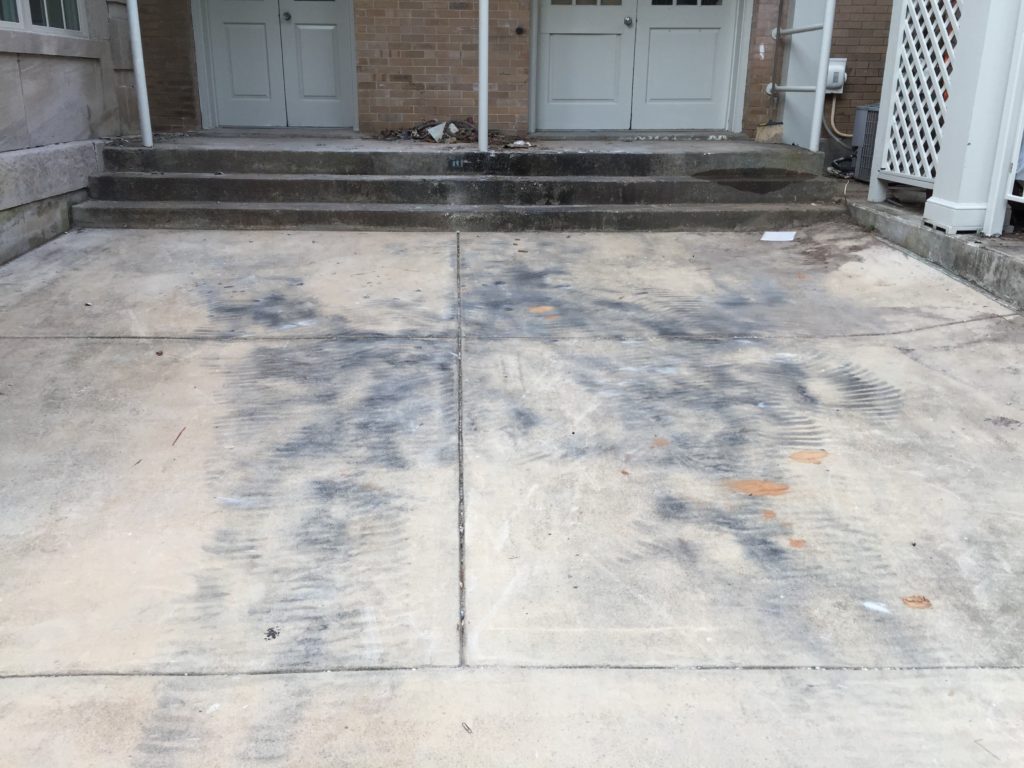 But when the car is driven, the tires heat up, causing the plasticizer to soften and leach out of the tire. When a hot tire is parked or driven on certain types of sealers, the plasticizer migrate into and discolor the sealer. The better the tire quality, the higher the quantity of plasticizer —and the greater the chance for hot tire marking. Lower-quality tires are harder and contain less plasticizer, so they usually result in less hot tire marking on sealers.”
But when the car is driven, the tires heat up, causing the plasticizer to soften and leach out of the tire. When a hot tire is parked or driven on certain types of sealers, the plasticizer migrate into and discolor the sealer. The better the tire quality, the higher the quantity of plasticizer —and the greater the chance for hot tire marking. Lower-quality tires are harder and contain less plasticizer, so they usually result in less hot tire marking on sealers.”
Related: Sealing Concrete Driveways
If your tire marks are especially stubborn, or you can't get rid of them completely, consider stripping and resealing your concrete or even resurfacing with a concrete coating.
It's time to get rid of that pesky tire scuff you've been meaning to clean up but haven't gotten around to. You've decided today is the day and you're wondering how to get tire marks off concrete. The answer is not as obvious as it might seem, but you may have realized that already if you've tried to wash it off to little avail. Luckily we've put together this guide on the best way to remove tire marks from concrete.
The answer is not as obvious as it might seem, but you may have realized that already if you've tried to wash it off to little avail. Luckily we've put together this guide on the best way to remove tire marks from concrete.
Here's our step by step guide on how to remove tire marks from concrete and get your driveway or garage floor looking pristine again.
Step 1. Clear the concrete floor of any debris
You'll want to make sure that you get all items off your garage floor or driveway. Make sure to cover up anything that might be in the way and could get wet or damaged. You'll also want to make sure you cover up any delicate plants in the surrounding area to ensure they are protected.
Step 2. Pour degreaser on the tire marks and let it sit
Use some concrete degreaser, like our CSP Degreaser, and pour it onto the scuffs and let it set for about 30 minutes while ensuring that you don't let it dry. The key here is to not let the degreaser dry, so continue adding more as needed to keep it saturated wet. During warmer months try to do your work in the cool part of the day and with less sun so it does not dry out as quickly.
The key here is to not let the degreaser dry, so continue adding more as needed to keep it saturated wet. During warmer months try to do your work in the cool part of the day and with less sun so it does not dry out as quickly.
Step 3. Scrub the area with a stiff straw brush
While some people say that they only need to pour on the CSP and allow it to sit a few minutes and then it will power wash right off, we still find that scrubbing it with a straw brush usually gets it up better. Scrub the area using our high quality Straw Concrete Scrub Brush to move the degreaser around as it soaks in, and after the 30 minutes aggressively scrub it once more. You can also use a floor scrubber or floor buffing machine with the black aggressive scrubbing/stripping pad.
Step 4. Apply some more degreaser and continue scrubbing
You should apply some more degreaser after a few minutes and scrub some more.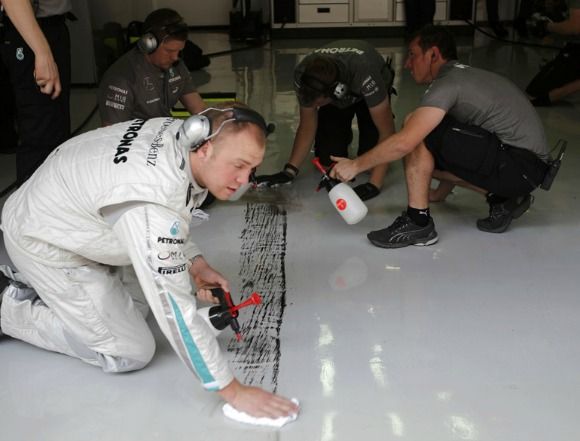 You won't usually need to do too much scrubbing at this point, but it's best to apply some more and give one last scrub.
You won't usually need to do too much scrubbing at this point, but it's best to apply some more and give one last scrub.
Step 5. Wash it off with a power washer
You can use a power washer or a sprayer nozzle to wash off the degreaser. If you are indoors, you can use a mop to wash it off.
Things to keep in mind
The CSP degreaser/cleaner is great for normal tire marks. Especially in garages, homeowner driveways, and the such. For really intense and massive tire marks such as on a commercial driveway or parking lot, while it usually works fine, if the CSP degreaser isn't strong enough, then you may need to move towards a harsh chemical such as Xylene.
It's also important to note that the CSP degreaser will work to strip concrete sealers. So while it's great for cleaning and prep, you shouldn't use it on sealed concrete unless you intend to strip the surface of the sealer for re-sealing. Just be aware that you should only use the CSP degreaser sparingly on sealed concrete and understand that you are still slowly stripping the sealer.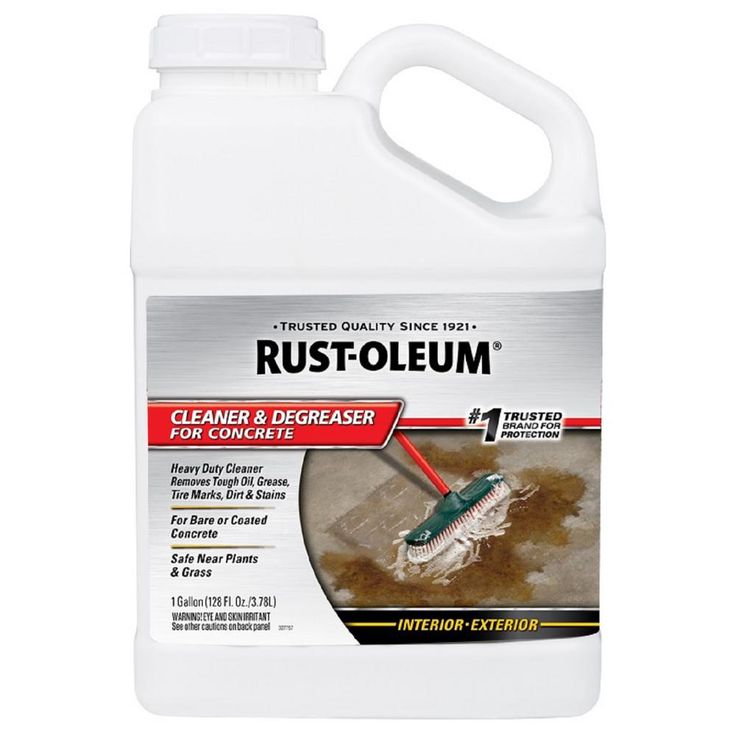
Planning to reseal? Make sure to check out our guide on sealing concrete and our Clear Shield water based sealer to ensure you get a long lasting finish on your newly cleaned concrete floor.
Add To Cart
View Product
August 10, 2022
A durable material, concrete has good adhesion to many surfaces. Thanks to this property, concrete allows you to create reliable and high-quality structures. Sometimes situations arise when it is necessary to clean the surface of hardened concrete without damaging the surface to be cleaned.
Situations that result in contamination of surfaces may be different. The main ones are the following:

To clean the surface and remove traces of concrete, an acidic agent from the company "Satellite" called "Proclin Antinakipin" will help to clean the surface. This is a concentrated, low-foaming, highly acidic product that perfectly copes with scale, dirt, and traces of concrete.
Concentrated Proclin Antinakipin is suitable for removing rust, hardened scale from tiles, mirrors, glass and other types of surfaces. Fights plaque from hard water salts. Cleans various surfaces from traces of concrete, cement and other strong contaminants.
"Proclin Antinakipin" perfectly removes plaque from hard water, copes with washing boilers and kitchen equipment, is used to prevent the formation and removal of blockages in pipes.
Scope of application of the concentrated acid agent are the following organizations and institutions:
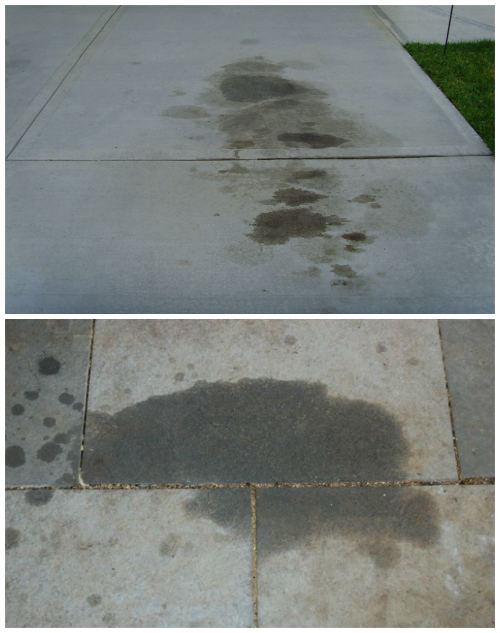
Proclin Antinakipin is a liquid, low foam, strong acid, concentrated product. Deletes various types of pollution: mineral pollution, a scum, a rust, limy raid.
“Proclin Antinakipin” explosion and fire safe, biodegradable product. It freezes at low temperatures, but after defrosting it retains its properties.
Proclin Antinakipin contains: acid, dye, water and functional additives. Before using this product, it is necessary to check the resistance of the treated surface. Apply the prepared solution to an inconspicuous area of \u200b\u200bthe surface.
Optimum temperature range - from 20 to 95 degrees. The use of "Proclin Antinakipin" is possible by soaking, by hand and by circulation.
To clean the surface and remove traces of concrete, cement and other contaminants, apply an even amount of product to the surface, leave for a few minutes (3-5 minutes), after the time has elapsed, rub with a sponge and rinse with hot water.
The optimal concentration of the solution is determined by the degree and type of contamination, water temperature, washing conditions, type of surface to be treated.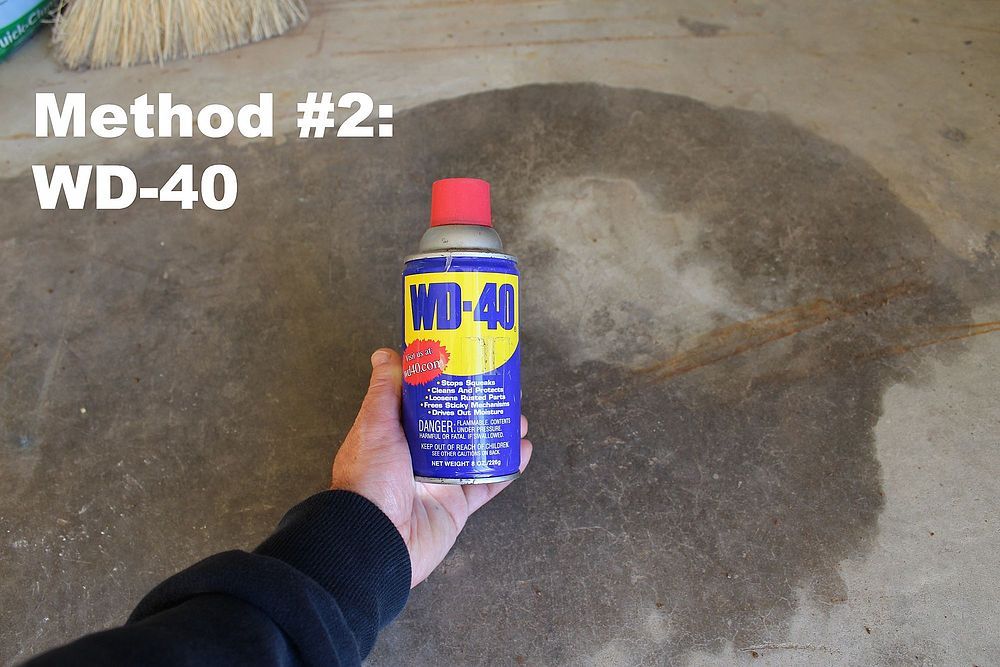
"Proclin Antinakipin" should be used only for the intended purpose, indicated on the package by the methods. When working with the product, use protective clothing, goggles and gloves. Avoid mixing with other products.
Do not use on tin, galvanized or enamelled surfaces. The tool is dangerous! Avoid swallowing, contact with skin, eyes, keep out of the reach of children.
Russian manufacturer of professional disinfectants, Septolit offers a wide range of disinfectants and related products. On the website of the online store https://septolit.ru you can buy everything you need for your business and home, as well as arrange delivery to anywhere in Russia.
Back to publications list
| Tire brake marks on concrete road are much more visible than on tarmac and they give your road a haunted look. Braking suddenly at high speed, grabbing car wheels, is the most common cause of brake marks. Step 1: Prepare Yard Near Concrete Road Remove container plants and cover any flowerbeds and trail lights, nearest brake tracks with a light plastic tarp loaded with bricks or rocks. Move any toys or bikes away from the road. Step 2: Rent or Borrow a 9 Hot Water Pressure Washer0003 For this task you will need a hot water pressure washer rated up to 3000 psi to remove the hard rubber strip off the concrete surface. Concrete must be rated to withstand 4000 psi pressure, the standard building material for roads. Spray the brake tracks for 2 to 3 minutes with pressure water with water hot enough to generate some steam. Step 3: Soak Brake Tracks With Industrial Strength Degreaser You can get industrial degreaser cleaners at your hardware or auto parts store. Step 4: Clean Brake Marks Using a bristle broom, brush over brake marks to lift off rubber particles. Rinse your broom from time to time as you dust. Be sure to brush around the edges of the brake track to ensure you've cleaned it all up. Step 5: Rinse Brake Track SpotsAdjust pressure washer to lower temperature, warm but not steaming, and rinse off brake track areas. Point the pressure washer nozzle down the road to the driveway, not to your lawn and flower beds. Finish with a rinse at the coolest pressure washer setting. Step 6: Road 9 squeegee0003 With a squeegee, pull as much water off the concrete road as you can. Let the road dry for 3 to 4 hours, and park cars on the road. Step 7: Cover Your Road With Penetrating Insulator Buy a clear penetrating concrete sealant for your driveway. |